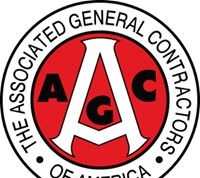Federal Financial Institutions Examination Council Announces Availability of 2014 Data on Mortgage Lending
WASHINGTON, D.C. – September 22, 2015 – (RealEstateRama) — The Federal Financial Institutions Examination Council (FFIEC) today announced the availability of data on mortgage lending transactions at 7,062 U.S. financial institutions covered by the Home Mortgage Disclosure Act (HMDA). Covered institutions include banks, savings associations, credit unions, and mortgage companies. The HMDA data made available today cover 2014 lending activity, and include applications, originations, purchases and sales of loans, denials, and other actions related to applications.
The data released today also include disclosure statements for each financial institution, aggregate data for each metropolitan statistical area (MSA), nationwide summary statistics on lending patterns, and Loan/Application Registers (LARs) for each financial institution (LARs are modified to protect borrower privacy). The FFIEC prepares and distributes this information on behalf of its member agencies.
The HMDA data show the disposition of loan applications and include information on:
- loan amount
- loan type (such as conventional, Federal Housing Administration (FHA) or Veterans Administration (VA))
- purpose (home purchase, home improvement, or refinancing)
- property type (1-4 family, multifamily, or manufactured housing)
- property location (MSA, state, county, and census tract)
- applicant characteristics (race, ethnicity, sex, and income)
- pricing-related data
The data also show whether a loan is subject to the Home Ownership and Equity Protection Act (HOEPA) and whether a loan is secured by a first or subordinate lien or is unsecured.
Understanding the Data
The 2014 HMDA data use the census tract delineations, population and housing characteristic data from the 2010 Census and from the combined 2006-2010 American Community Surveys, as has been the case since 2012, when these delineations and data were first used. In addition, the data reflect revised MSA definitions released by the Office of Management and Budget in February 2013.
Caution should be used when comparing HMDA data across multiple years for specific geographies due to the changes in MSA and tract boundaries and updates to the population and housing characteristics of census tracts. For example, some MSAs may have the same name and code number in both 2013 and 2014, even though the underlying geography is different.
The HMDA data are the most comprehensive publicly available information on mortgage market activity. Among other uses, the data help the public determine how financial institutions are serving the housing needs of their local communities and facilitate fair lending and compliance examinations. When examiners evaluate an institution’s fair lending risk, they analyze HMDA data in conjunction with other information and risk factors in accordance with the Interagency Fair Lending Examination Procedures.
The HMDA data alone cannot be used to determine whether a lender is complying with fair lending laws. They do not include many potential determinants of loan application and pricing decisions, such as the applicant’s credit history, the debt-to-income ratio, the loan-to-value ratio, and others. Therefore, when examiners conduct fair lending examinations, including ones involving loan pricing, they analyze additional information before reaching a determination about institutions’ compliance with fair lending laws.
Observations from the 2014 Data
For 2014, the number of reporting institutions declined approximately 2 percent to 7,062 from 2013, continuing a downward trend since 2006 when about 8,900 lenders reported HMDA data.
The 2014 data include information on 9.9 million home loan applications—of which, nearly 6.0 million resulted in loan originations—and about 1.8 million loan purchases, for a total of nearly 11.7 million actions.
The data also include information on about 501,000 requests for preapprovals related to a home purchase loan. The total number of originated loans of all types and purposes declined by about 2.7 million, or 31 percent, from 2013. Refinance originations declined by 55 percent, whereas home purchase lending increased by about 4.0 percent.1
From 2013 to 2014, the share of home purchase loans for 1-4 family properties made to black borrowers rose from 4.4 percent to nearly 4.9 percent, the share made to Hispanic white borrowers rose from 6.9 percent to 7.5 percent, and those made to Asian borrowers declined slightly from 6.0 percent to 5.7 percent. While the number of refinance loans for 1-4 family properties declined for each of these groups, the share of refinance loans made to black borrowers increased from 4.4 percent to 5.2 percent, the share made to Hispanic white borrowers rose from 5.0 percent to 6.0 percent, and those made to Asian borrowers fell from 4.9 percent to 4.5 percent.
In terms of borrower income, the share of 1-4 family home purchase loans made to low- and moderate-income borrowers (those with income of less than 80 percent of area median income) declined slightly from about 26 percent in 2013 to roughly 25 percent in 2014. Conversely, the share of refinance loans to low- and moderate-income borrowers increased slightly from 20 percent to 21 percent.
Following the recent financial crisis, homebuyers relied heavily on government-backed mortgages, particularly those insured by the FHA or guaranteed by the VA, to finance their purchases, but this reliance has declined somewhat in recent years. In 2014, the FHA-insured share of first-lien home purchase loans for 1-4 family, site-built owner-occupied properties was 21 percent—down from 24 percent in 2013, and down from its peak of 42 percent in 2009.
The VA-guaranteed share of such loans for 2014 was approximately 10 percent, increasing from 9 percent in 2013. Including Rural Housing Service loans, the overall government-backed share of such loans was 37 percent in 2014, edging down from 38 percent in 2013, and down from 54 percent in 2009.
FHA-insured and VA-guaranteed loans tend to play a less prominent role in the refinance market compared to the home purchase market. In 2014, conventional loans accounted for 81 percent of all first-lien refinance mortgages for 1-4 family, site-built owner-occupied properties, down from about 84 percent in 2013, while FHA-insured loans accounted for about 9 percent—similar to 2013. The VA-guaranteed share of refinance loans increased from 6 percent to 10 percent since 2013.
The 2014 HMDA data also include information on loan pricing. Lenders report pricing information for loans classified as “higher-priced.” Higher-priced loans are defined as loans with annual percentage rates (APRs) that exceed the average prime offer rates by at least 1.5 percentage points for first-lien loans and at least 3.5 percentage points for subordinate lien loans. The data on the incidence of higher-priced lending shows that about 8 percent of first-lien loans originated in 2014 have APRs that exceed the loan price reporting thresholds, up from about 5 percent in 2013.
The majority of higher-priced first-lien loans in 2014 were FHA-insured. About 45 percent of FHA-insured first-lien home purchase loans had APRs above the reporting threshold, similar to the percentage in the latter half of 2013. The FHA raised its annual mortgage insurance premium (MIP) slightly in April 2013, and extended the period over which MIP is required to be paid by borrowers in June 2013. These changes, particularly the latter, led to higher APRs for FHA loans. About three-quarters of FHA-insured purchase loans that met the higher-priced definition in 2014 had APRs that were less than 0.5 percentage points above the higher-priced threshold. As noted above, the HMDA data indicate which loans are covered by HOEPA. Under HOEPA, certain types of mortgage loans that have interest rates or total points and fees above specified levels provide special consumer protections such as additional disclosures and various restrictions on loan terms.
In January 2014, new rules went into effect that expanded the types of mortgage loans covered from refinance and home equity loans to also include home-purchase loans and home equity lines of credit, and added new protections such as mandatory homeownership counseling. In 2014, 1,263 loan originations covered by HOEPA were reported: 634 refinance loans, 227 home improvement loans and 401 home purchase loans. In 2013, 1,873 HOEPA loans were reported: 1,309 refinance loans and 564 home improvement loans.
In 2014, black and Hispanic white applicants experienced higher denial rates for conventional home purchase loans than non-Hispanic white applicants. The denial rate for Asian applicants is more comparable to the denial rate for non-Hispanic white applicants. These relationships are similar to those found in earlier years.
Additional HMDA Information
Financial institution disclosure statements, individual institutions’ LAR data, and MSA and nationwide aggregate reports are available at http://www.ffiec.gov/hmda. The FFIEC now offers these reports in Excel format for both current and historical data. Refer to the HMDA data products at http://www.ffiec.gov/hmda/hmdaproducts.htm for the item descriptions and formats. HMDA data tools also are available at http://www.consumerfinance.gov/hmda.
More information about HMDA data reporting requirements is available on the FFIEC Web site at http://www.ffiec.gov/hmda/faq.htm.
Financial institutions are required to make their disclosure statements available at their home offices. For other MSAs in which financial institutions have offices, an institution must either make the disclosure statement available at one branch within each MSA or provide a copy upon receiving a written request. Questions about a HMDA report for a specific institution should be directed to the institution’s supervisory agency at the number listed below.
- Federal Deposit Insurance Corporation — 877-275-3342; hearing impaired — 800-925-4618
- Board of Governors of the Federal Reserve System, HMDA Assistance Line — 202-452-2016
- National Credit Union Administration, Office of Consumer Protection — 703-518-1140
- Office of the Comptroller of the Currency, Compliance Policy Division — 202-649-5470
- Consumer Financial Protection Bureau — 202-435-7000
- Department of Housing and Urban Development, Office of Housing — 202-708-0685
###
The FFIEC was established in March 1979 to prescribe uniform principles, standards, and report forms and to promote uniformity in the supervision of financial institutions. It also conducts schools for examiners employed by the five federal member agencies represented on the FFIEC and makes those schools available to employees of state agencies that supervise financial institutions. The Council consists of the following six voting members: a member of the Board of Governors of the Federal Reserve System (Board); the Chairman of the Federal Deposit Insurance Corporation; the Director of the Consumer Financial Protection Bureau; the Comptroller of the Currency; the Chairman of the National Credit Union Administration; and the Chairman of the State Liaison Committee.
Media Contacts:
| CFPB | Sam Gilford | (202) 435-7673 |
| FDIC | LaJuan Williams-Young | (202) 898-3876 |
| Federal Reserve | Susan Stawick | (202) 452-2955 |
| NCUA | Ben Hardaway | (703) 518-6333 |
| OCC | William Grassano | (202) 649-6870 |
| SLC | Catherine Woody | (202) 728-5733 |
1 For historical and more detailed data derived from the annual HMDA records, see forthcoming, “The 2014 Home Mortgage Disclosure Act Data” Federal Reserve Bulletin, http://www.federalreserve.gov/pubs/bulletin/2015/pdf/2014_HMDA.pdf.














